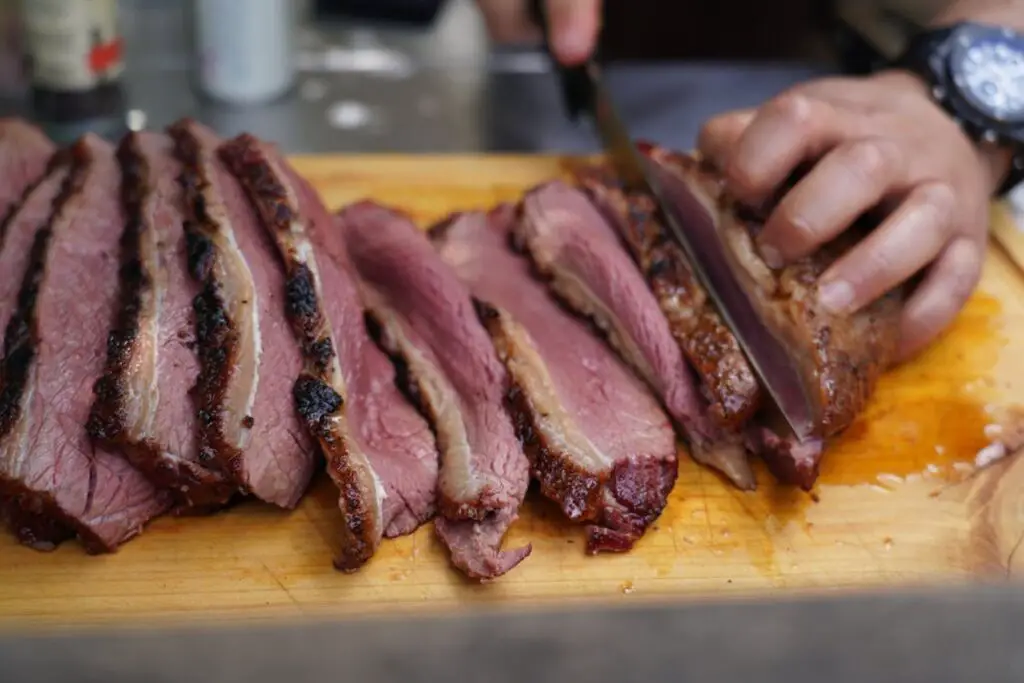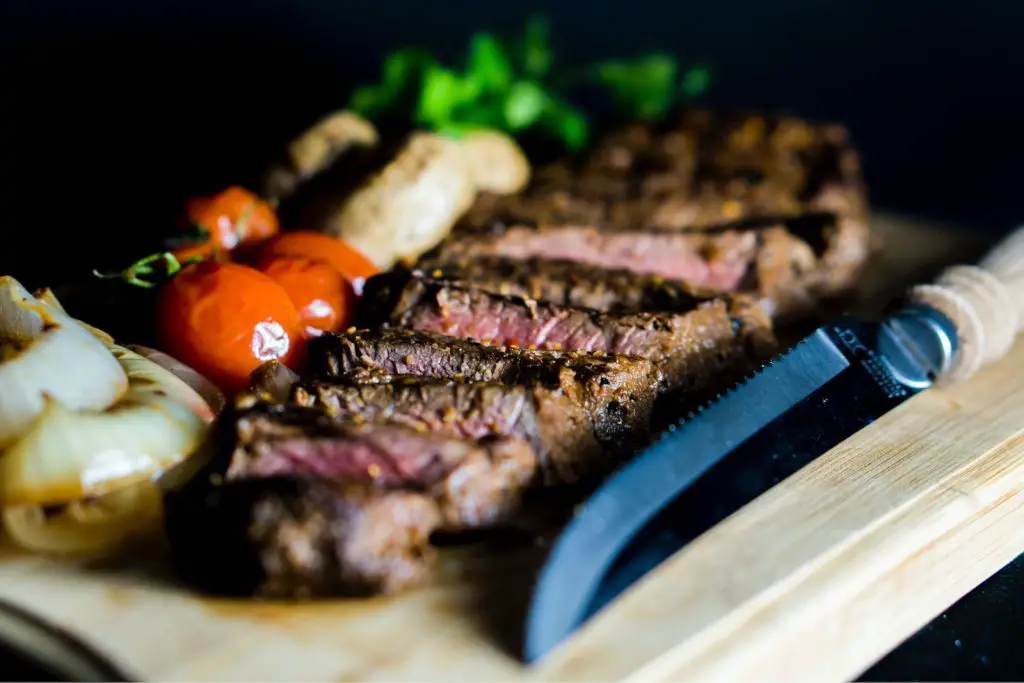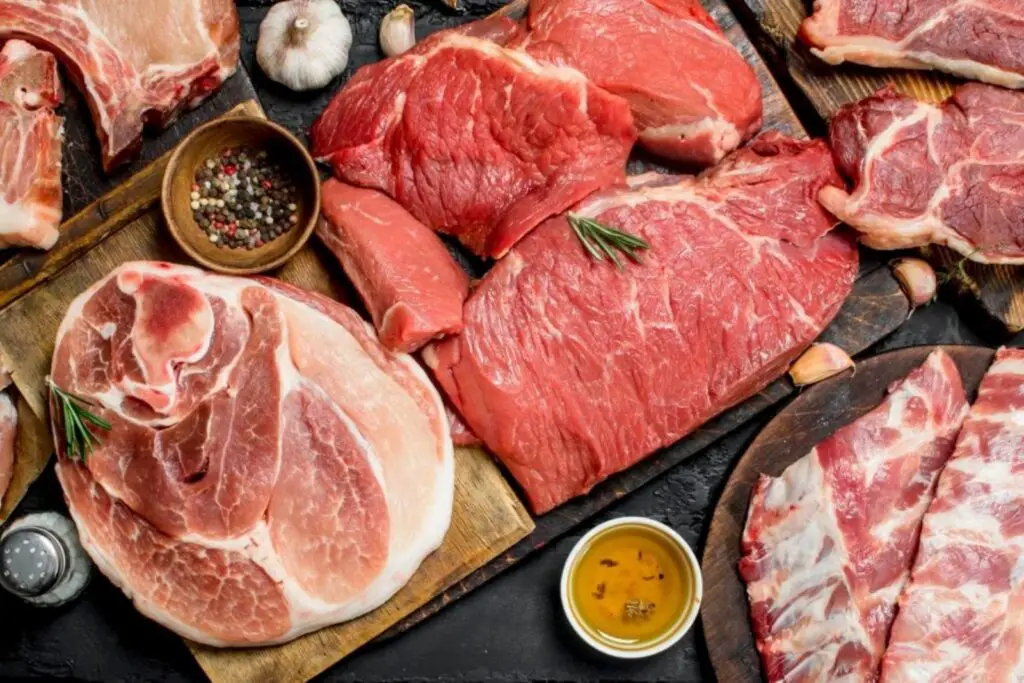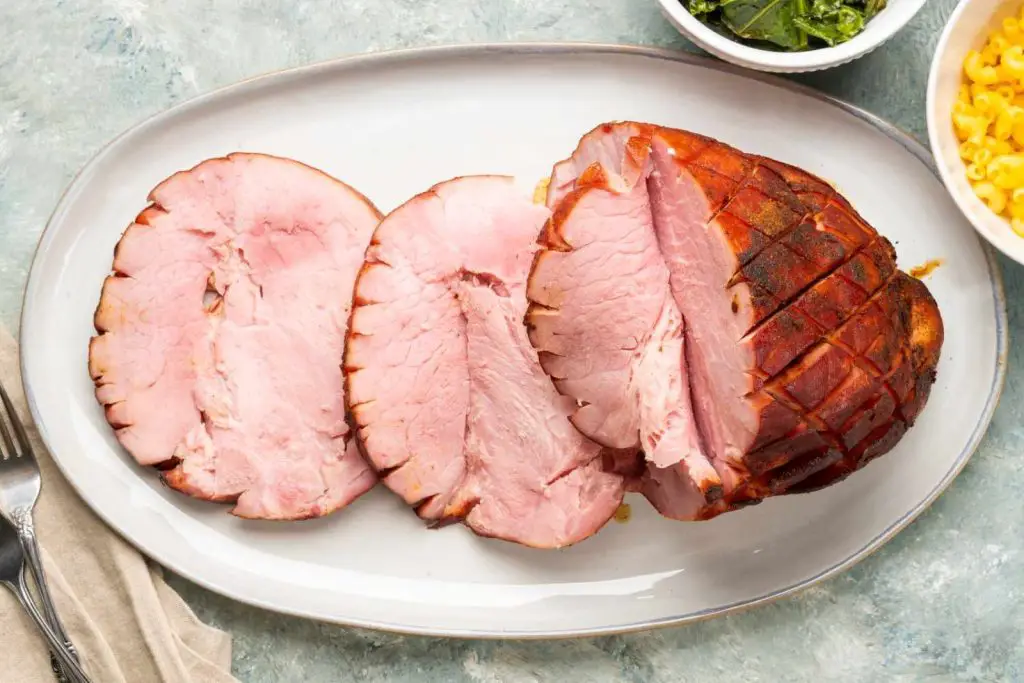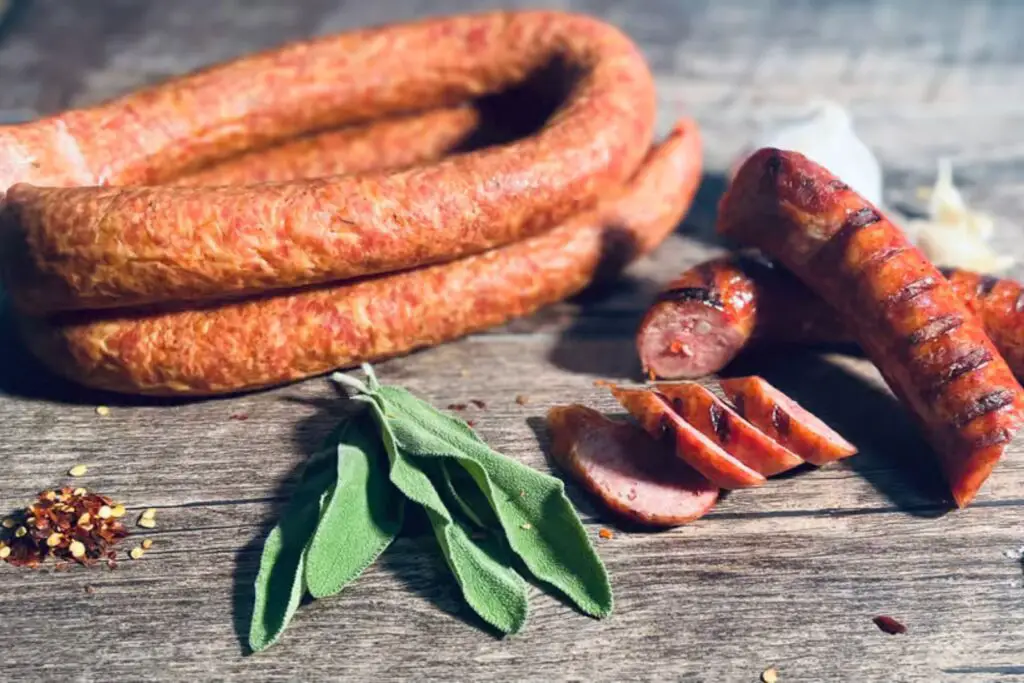
Freezing raw prime rib is a great way to preserve this delicious cut of meat for later use. Whether you’ve purchased a large prime rib roast for a special occasion or simply want to take advantage of a sale, freezing the meat can help you to save time and money while ensuring that you always have a delicious meal on hand.
However, it’s important to take the right steps to freeze uncooked prime rib properly to avoid freezer burn and other issues that can affect the quality of the meat. By following a few simple steps, you can safely freeze your raw prime rib and enjoy it later.
Here are the steps to follow to freeze raw prime rib:
Step 1: Choose the right packaging
Airtight, moisture-proof packaging is essential to prevent freezer burn and to keep the meat fresh. Vacuum-sealed bags or heavy-duty freezer bags work well.
Step 2: Prepare the prime rib
Next, you’ll need to prepare the prime rib. Whether you choose to season it before freezing or leave it unseasoned is up to you. Some people prefer to season the meat before freezing to save time later, while others prefer to wait and season it after thawing.
What are the best seasonings before freezing the prime rib?
If you plan to season a prime rib before freezing it, it’s important to keep in mind that the seasoning will intensify as the meat freezes and then thaws. Therefore, it’s generally best to keep the seasoning simple and avoid adding too many strong or overpowering flavors. Some good options for seasonings to use before freezing a prime rib include:
Salt and pepper:
A simple mixture of salt and black pepper is a classic seasoning for prime rib. It enhances the natural flavor of the meat without overpowering it.
Garlic:
Garlic can add a subtle flavor to the prime rib without being too overpowering. You can use fresh minced garlic or garlic powder.
Herbs:
Fresh or dried herbs such as rosemary, thyme, and oregano can add a nice flavor to the prime rib. However, be careful not to use too much, as the flavors can become stronger as the meat freezes and then thaws.
Olive oil:
A light coating of olive oil can help seal in the juices and flavor of the prime rib.
When seasoning a prime rib before freezing, be sure to rub the seasoning mixture evenly all over the meat. Then, wrap the prime rib tightly in foil or plastic wrap and store it in the freezer until ready to use.
Step 3: Wrap the prime rib
Once you’ve prepared the prime rib, wrap it tightly with plastic wrap or aluminum foil to prevent any air from entering the packaging. This will help to prevent freezer burn, which can cause the meat to become tough and lose flavor.
Can you freeze a prime rib in tin foil?
Yes, you can freeze a prime rib in tin foil. Wrapping the prime rib in tin foil before freezing can help protect it from freezer burn and prevent moisture loss. However, it’s important to ensure that the prime rib is tightly wrapped in multiple layers of foil to prevent air from getting in and causing freezer burn.
Step 4: Label the package
It’s also important to label the package with the date of freezing and the name of the cut of meat. This will help you keep track of how long the meat has been frozen and what it is.
Step 5: Freeze the prime rib
When you’re ready to freeze the prime rib, place it in the freezer. Ideally, you should freeze it in the coldest part of the freezer, which is usually at the back. This will help to ensure that the meat freezes quickly and stays at a safe temperature.
Step 6: Thaw the prime rib
When you’re ready to cook the prime rib, you’ll need to thaw it in the refrigerator for 24-48 hours. It’s important to avoid thawing the meat at room temperature or in warm water, as this can increase the risk of foodborne illness.
How to thaw frozen uncooked prime rib?
Thawing frozen prime rib properly is important to ensure that the meat is safe to eat and retains its flavor and texture. Here are the steps to follow to thaw frozen prime rib:
Plan ahead:
It’s important to allow enough time for the prime rib to thaw properly. Depending on the size of the meat and the temperature of your refrigerator, it can take anywhere from 24 to 48 hours to thaw completely.
Move the meat to the refrigerator:
Remove the frozen prime rib from the freezer and place it in the refrigerator. It’s best to place the meat on a tray or a plate to catch any drips.
Wait patiently:
Allow the meat to thaw in the refrigerator for the recommended time. Avoid trying to rush the process by thawing the meat at room temperature or in warm water, as this can increase the risk of foodborne illness. It is not recommended to leave meat out to thaw overnight at room temperature. This is because at room temperature, the outer layer of the meat can enter the “danger zone” of between 40°F (4°C) and 140°F (60°C), where bacteria can grow rapidly and cause foodborne illness.
Check for readiness:
After the recommended thawing time has passed, check the prime rib for readiness. The meat should be soft to the touch and no longer frozen in the center.
Season and cook:
Once the prime rib is fully thawed, you can season it as desired and cook it using your preferred method. Whether you choose to roast it in the oven, grill it, or cook it in a slow cooker, be sure to follow safe cooking practices and use a meat thermometer to ensure that the meat reaches a safe internal temperature.
Other related questions
How long can uncooked ribs stay in the freezer?
Uncooked ribs can stay in the freezer for up to 6 to 12 months without compromising their quality, flavor, and texture, provided that they are stored properly. The length of time that uncooked ribs can stay in the freezer depends on the type of ribs, their quality, and the temperature of the freezer. To maximize the shelf life of uncooked ribs in the freezer, it’s important to store them properly.
How long can uncooked prime rib last in the fridge?
The length of time that uncooked prime rib can last in the refrigerator depends on several factors, including the quality of the meat, how it was stored, and how close it is to the expiration date. In general, uncooked prime rib can be stored in the refrigerator for 3 to 5 days before it should be cooked or frozen.
How do you store uncooked prime rib?
Proper storage of uncooked prime rib is essential to maintain its quality and prevent foodborne illness. Here are the steps to follow to store uncooked prime rib:
Choose the right packaging:
Use airtight, moisture-proof packaging to keep the meat fresh. Vacuum-sealed bags or heavy-duty freezer bags work well.
Keep the meat cold:
Store the prime rib in the refrigerator or freezer, depending on when you plan to use it. If you plan to use the meat within a few days, store it in the refrigerator. If you won’t be using it for several days or longer, store it in the freezer.
Wrap the meat:
Wrap the prime rib tightly with plastic wrap or aluminum foil to prevent any air from entering the packaging. This will help to prevent freezer burn and to keep the meat fresh.
Label the package:
Write the date of purchase or packaging and the name of the cut of meat on the packaging. This will help you keep track of how long the meat has been stored and what it is.
Keep the meat separate:
Store the prime rib separately from other foods to prevent cross-contamination. Raw meat can contain harmful bacteria that can spread to other foods if they come into contact.
By following these steps, you can safely store uncooked prime rib and maintain its quality. It’s important to keep the meat cold, wrap it tightly, and label the package to keep track of how long it has been stored. With proper storage, you can enjoy delicious prime rib whenever you’re ready to cook it.
Can you freeze a prime rib before you cook it?
Yes, you can freeze a prime rib before you cook it. Freezing is a great way to extend the shelf life of the meat and can be a convenient way to plan ahead for a special occasion or event.
When freezing prime rib, it’s important to follow proper storage techniques to ensure that the meat stays fresh and safe to eat. Follow the steps mentioned above on how to freeze prime rib before cooking it.
Does prime rib need to be at room temperature before cooking?
Yes, it’s recommended to let the prime rib come to room temperature before cooking it. This helps to ensure that the meat cooks more evenly and results in a more tender and flavorful finished product.
Allowing the prime rib to come to room temperature also helps to reduce the cooking time, as it takes less time for the meat to cook through when it’s not cold. The amount of time needed for the meat to come to room temperature can vary depending on the size of the roast, but typically it’s recommended to let it sit out for 1-2 hours before cooking.
To bring the prime rib to room temperature, remove it from the refrigerator and let it sit on the counter, covered, for the recommended amount of time. This will allow the meat to warm up gradually and will help to prevent any bacterial growth that may occur if the meat is left out for too long. Once the meat has reached room temperature, you can proceed with your desired cooking method.
How long does it take to defrost prime rib?
The amount of time it takes to defrost a prime rib will depend on the size of the roast and the method you use for defrosting. Here are the general guidelines for defrosting prime rib:
Refrigerator Method:
Allow 24 hours of defrosting time for every 4-5 pounds of prime rib.
Place the frozen prime rib in a dish or tray in the refrigerator on the bottom shelf, where it can’t leak onto other foods.
Keep the prime rib in its original packaging or wrap it in plastic wrap or aluminum foil to prevent it from drying out.
Once defrosted, the prime rib can stay in the refrigerator for an additional 1-2 days before cooking.
Cold Water Method:
Allow 30 minutes of defrosting time per pound of prime rib.
Fill a large container with cold water and submerge the frozen prime rib in the water, making sure it’s completely covered.
Change the water every 30 minutes to keep it cold.
Once defrosted, cook the prime rib immediately.
Microwave Method:
Follow the instructions on your microwave to defrost the prime rib.
Be sure to use the defrost setting and not the regular microwave setting.
Once defrosted, cook the prime rib immediately as the microwave method may partially cook the edges of the meat.
It’s important to note that defrosting the prime rib in the refrigerator is the safest and most effective method, as it allows for slow and even defrosting while keeping the meat at a safe temperature. Plan ahead and give yourself enough time to defrost the prime rib properly to ensure the best possible results when you cook it.
How do you prepare uncooked prime rib before cooking?
Here are the general steps for preparing prime rib before cooking:
- Remove the prime rib from the refrigerator and let it sit at room temperature for at least 1-2 hours before cooking. This will allow the meat to come to room temperature, which helps it cook more evenly.
- Preheat your oven to the desired temperature. Generally, prime rib is cooked at a high temperature for the first 15-20 minutes to sear the outside and then at a lower temperature to finish cooking the inside.
- Pat the prime rib dry with paper towels to remove any excess moisture.
- Rub the prime rib with a mixture of salt, pepper, and any other desired seasonings, such as garlic or herbs. You can also brush the meat with olive oil or melted butter for added flavor and to help create a crust.
- Place the prime rib in a roasting pan with the fat side up, making sure it’s not crowded in the pan. You can also place the prime rib on a rack inside the roasting pan to help it cook more evenly.
- Insert a meat thermometer into the thickest part of the meat, making sure it’s not touching any bones.
- Roast the prime rib in the preheated oven, following your desired cooking method and temperature, until the meat reaches the desired internal temperature.
- Once the prime rib is cooked, remove it from the oven and tent it loosely with foil. Let it rest for at least 15-20 minutes to allow the juices to redistribute.
- Carve the prime rib into slices and serve.
Keep in mind that the specific cooking time and temperature will depend on the size of the prime rib, your desired level of doneness, and your cooking method. Always use a meat thermometer to ensure the meat is cooked to your desired level of doneness and safe to eat.
Should I sear prime rib before roasting?
Yes, it’s recommended to sear prime rib before roasting. Searing the prime rib at a high temperature for the first 15-20 minutes helps to create a flavorful crust on the outside of the meat and also helps to lock in the juices.
To sear the prime rib, preheat your oven to a high temperature, such as 450°F (230°C), and place the seasoned prime rib in a roasting pan. Place the pan in the oven and roast the meat for 15-20 minutes, until the outside is browned and crispy. After searing, reduce the oven temperature to the desired temperature for finishing the roast and continue cooking until the desired internal temperature is reached.
Some chefs also recommend searing the prime rib on the stovetop before roasting, using a cast iron skillet or other heavy-bottomed pan. This can be a good option if you don’t have a large enough roasting pan or if you prefer the extra control over the searing process.
Overall, searing the prime rib before roasting is an important step in achieving a flavorful and juicy finished product, so it’s recommended to take the time to do it.
Do you cover the prime rib after searing?
After searing a prime rib, it is generally not necessary to cover it before continuing to roast it in the oven. However, some recipes may call for covering the prime rib with foil or a lid during the cooking process to help prevent it from drying out.
If you choose to cover the prime rib, be sure to remove the cover for the last 10-15 minutes of cooking to allow the exterior to crisp up and develop a nice crust. Covering the prime rib can help retain moisture and prevent it from overcooking, but it may also result in a softer exterior texture and less browning.
Ultimately, whether or not to cover the prime rib after searing will depend on the recipe you are following and your personal preference. If you prefer a more crispy exterior, it is best to leave the prime rib uncovered during the cooking process.
Is raw prime rib better fresh or frozen?
Prime rib can be delicious whether it is fresh or frozen, but there are some differences to consider.
Fresh prime rib may be more readily available at your local butcher or grocery store, and it is typically easier to work with since it doesn’t need to be thawed before cooking. Fresh prime rib also tends to have a slightly better texture and taste than frozen prime rib, as it has not been subjected to the freezing process.
On the other hand, frozen prime rib can be a good option if you want to plan ahead or if you find a good deal on a large cut of meat. Freezing can help preserve the quality of the meat and extend its shelf life, as long as it is frozen and thawed properly. However, it’s important to note that freezing can sometimes cause the meat to lose some moisture, which can affect the texture and flavor.
In the end, whether you choose fresh or frozen prime rib will depend on your personal preferences and circumstances. If you can find high-quality fresh prime rib and plan to cook it soon, that may be the best option. However, if you want to save time or money, or if you can only find frozen prime rib, that can also work well as long as you handle it properly.
Should I leave prime rib uncovered in the fridge?
When storing a prime rib in the refrigerator, it is generally best to leave it uncovered or loosely covered. This allows for air circulation around the meat, which helps to prevent moisture buildup and can extend its shelf life.
However, if you have a small refrigerator with limited space or if you are concerned about other foods in the fridge contaminating the prime rib, you can cover it loosely with plastic wrap or foil.


